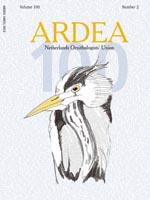We set out to explore whether changes in fecundity and survival (or both) of European Honey Buzzards were associated with trends observed in The Netherlands. We used standardized monitoring data on numbers and reproduction from several study plots in The Netherlands over the period of 1974–2005. Survival estimates were based on recoveries of Honey Buzzards ringed throughout Europe (collated by EURING and individual ringing stations). Based on these values we computed the annual population growth rate with a time invariant population model, and used elasticity analysis to detect the parameter with the strongest influence on growth rate. Lambda was smaller than 1, suggesting a population decline, but confidence intervals around lambda were relatively wide. Elasticity of adult survival was much higher than of any other life history parameter, indicating that adult survival has potentially the greatest impact on annual population growth. Because data on reproduction varied strongly we estimated a 95% confidence interval for annual population growth by bootstrapping the reproduction data. Furthermore, we analysed the influence of stochastic food availability (i.e. wasp abundance) on reproduction, and through this demographic factor, on the population trend. The stochastic model suggests a clear population decline, which is consistent with observed declines across much of northern and western Europe (including The Netherlands). For the growth rate λ to reach 1, a reproductive output of 1.16 young per pair was calculated to be necessary, much higher than the 0.53–0.88 found in two study sites in The Netherlands.
How to translate text using browser tools
1 October 2012
Demography of European Honey Buzzards Pernis apivorus
Rob G. Bijlsma,
Minou Vermeulen,
Lia Hemerik,
Chris Klok

Ardea
Vol. 100 • No. 2
October 2012
Vol. 100 • No. 2
October 2012
age-specific survival
Pernis apivorus
Population modeling
reproduction
social Hymenoptera
trends




